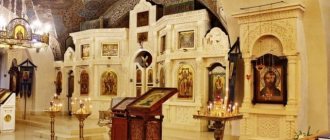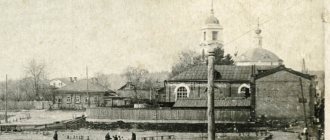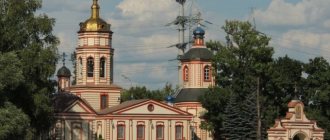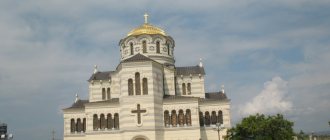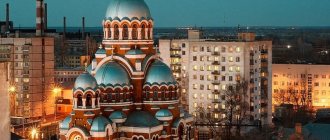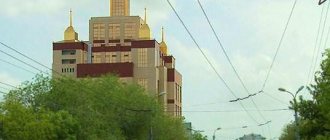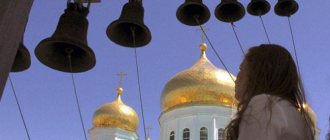Mir
Belarus Minsk region Borisov Holy Resurrection Cathedral (Borisov) Map is loading...
{"format":"leaflet","minzoom":false,"maxzoom":false,"limit":50,"offset":0,"link":"all","sort":[""], "order":[],"headers":"show","mainlabel":"","intro":"","outro":"","searchlabel":"\u2026 \u0441\u043b\u0435\ u0434\u0443\u044e\u0449\u0438\u0435 \u0440\u0435\u0437\u0443\u043b\u044c\u0442\u0430\u0442\u044b","default":"","import-annotation":false,"width ":"auto","height":"350px","centre":{"text":"","title":"""link":"","lat":54.24499999999999744204615126363933086395263671875,"lon": 28.5038899999999983947418513707816600799560546875,"icon":""},"title":"","label":"","icon":"","lines":[],"polygons":[],"circles":[ ],"rectangles":[],"copycoords":false,"static":false,"zoom":8,"defzoom":14,"layers":["OpenStreetMap"],"image layers":[] ,"overlays":[],"resizable":false,"fullscreen":true,"scrollwheelzoom":true,"cluster":false,"clustermaxzoom":9,"clusterzoomonclick":true,"clustermaxradius":80, "clusterspiderfy":true,"geojson":"","clicktarget":"","showtitle":true,"hidenamespace":false,"template":"","userparam":"","activeicon": "","pagelabel":false,"ajaxcoordproperty":"","ajaxquery":"","locations":[{"text":"\u003Cb\u003E\u003Ca href=\"/palomnik/%D0% A1%D0%B2%D1%8F%D1%82%D0%BE-%D0%92%D0%BE%D1%81%D0%BA%D1%80%D0%B5%D1%81%D0%B5 %D0%BD%D1%81%D0%BA%D0%B8%D0%B9_%D1%81%D0%BE%D0%B1%D0%BE%D1%80_(%D0%91%D0%BE% D1%80%D0%B8%D1%81%D0%BE%D0%B2)\» title=\»\u0421\u0432\u044f\u0442\u043e-\u0412\u043e\u0441\u043a\u0440\u0435\ u0441\u0435\u043d\u0441\u043a\u0438\u0439 \u0441\u043e\u0431\u043e\u0440 (\u0411\u043e\u0440\u0438\u0441\u043e\u0432)\»\u003E \u0421\u0432\u044f\ u0442\u043e-\u0412\u043e\u0441\u043a\u0440\u0435\u0441\u0435\u043d\u0441\u043a\u0438\u0439 \u0441\u043e\u0431\u043e\u0440 (\u 0411\u043e\u0440\u0438\ u0441\u043e\u0432)\u003C/a\u003E\u003C/b\u003E\u003Chr /\u003E\u003Ca href=\»/palomnik/%D0%A1%D0%B2%D0%BE%D0%B9%D1 %81%D1%82%D0%B2%D0%BE:%D0%90%D0%BD%D0%BD%D0%BE%D1%82%D0%B0%D1%86%D0%B8%D1% 8F\" title=\"\u0421\u0432\u043e\u0439\u0441\u0442\u0432\u043e:\u0410\u043d\u043d\u043e\u0442\u0430\u0446\u0438\u044f\"\u003E\u04 10\u043d \u043d\u043e\u0442\u0430\u0446\u0438\u044f\u003C/a\u003E: \u041d\u0430\u0445\u043e\u0434\u0438\u0442\u0441\u044f \u0432 \u0 421\u0442\u0430\u0440\ u043e-\u0411\u043e\u0440\u0438\u0441\u043e\u0432\u0435 \u043d\u0430 \u0440\u044b\u043d\u043e\u0447\u043d\u043e\u0439 \u043f\ u043b\u043e\u0449\u0430\u0434 \u0438. \u0421\u043e\u0431\u043e\u0440 \u044f\u0432\u043b\u044f\u0435\u0442\u0441\u044f \u043f\u0430\u043c\u044f\u0442\u043d\u0438\ u043a\u043e\u043c\u0440\u0435 ( u043f\u0441\u0435\u0432 \u0434\u043e\u0440\u0443\u0441\u0441\u043a\u043e\u0433\u043e) \u0441\u0442\u0438\u043b\u044f, \u043f\u0440\u0438\u0441\u044 3\u0442\u0441\u0442\u0432 \u0443\u044e\u0442 \u043f\u0440\u0438\u0437\u043d\u0430\u043a\u0438 \u0441\u0442\u0438\u043b\u0438\u0437\u0430\u0446\u0438\ u0438\u0444\u043e\u0440\u043c > 043e\u0441\u0442\u0440\u043e \u0438\u0442\u0435\u043b\u044c\u0441\u0442\u0432\u0430 XVII \u0432\u0435\u043a\u0430.","title":"\u0421\u0432\u044f\u0442\u043e-\u04 12\u043e \u0441\u043a\u0440\u0435\u0441\u0435\u043d\u0441\u043a\u0438\u0439 \u0441\u043e\u0431\u043e\u0440 (\u0411\u043e\u0440\u0438\ u0441\u043e\u0432)", "link":"","lat":54.24499999999999744204615126363933086395263671875,"lon":28.5038899999999983947418513707816600799560546875,"icon":""} ],"imageLayers":[]}
54.244493; 28.507425
Belarus, Minsk region, Borisov, Komsomolskaya street
Borisov, Minsk region
Belarus
Phones
: 8 0177 94 29 60 (city); + 375 29 544 09 60 (MTS); + 375 44 544 09 60 (velcom).
Email:
Resurrection Cathedral, Cathedral of the Resurrection of the Lord
- Orthodox church in the city of Borisov. Located in Staro-Borisov on the market square. The cathedral is a monument of the retrospective Russian (pseudo-Russian) style; there are signs of stylization of the forms of Moscow church construction of the 17th century.
History[edit]
The foundation stone of the temple took place on Sunday, September 5, 1871.
The cathedral was built by highly qualified masons from Ivenets, and Vilna artists Elishevsky and Trutnev were invited to decorate the interior. Technical management was provided by architect Sergei Petrovich Ivanov. The author of the project, according to the research of Minsk resident V.M. Chernatov, there was a St. Petersburg engineer Pyotr Petrovich Merkulov.
The construction of the temple, consecrated in honor of the Resurrection of Christ, lasted three years and ended on October 15, 1874, and five days later, on October 20, the first service took place.
At the beginning of the 20th century, a local official and church elder, Nil Burtsev, took the initiative to build a brick belfry at the main entrance of the cathedral. And this idea was brought to life in 1907 by the Minsk diocesan architect Viktor Struyev. Now this bell tower together with the cathedral form a valuable ensemble.
The temple was closed by the authorities in the 1930s. The crosses were cut down from the domes, and the interior was plundered. The cathedral was turned into a granary, and the bell tower was converted into a parachute tower.
During the fascist occupation of Borisov, the cathedral was returned to believers. It was renovated, and regular services began there.
After the liberation of the city, the rector of the cathedral, John Strok, was arrested and sentenced to five years in the camps. But the cathedral was no longer closed, although during the reign of Khrushchev the ringing of bells was banned, which allegedly disturbed the peace of the townspeople (perestroika abolished this ban).
On June 16, 1997, the belfry was re-dedicated. Five bells were consecrated, which were cast in Moscow at the expense of parishioners.
In 1988, the former treasury building was transferred to the cathedral. Now it houses the cathedral's Sunday school and the baptismal church, the altar of which is consecrated in honor of St. Alexander Nevsky.
With the establishment of the Borisov Vicariate of the Minsk Diocese on March 13, 2002, the Church of the Resurrection became the cathedral of the Vicariate.
On October 19, 2014, the Patriarchal Exarch of All Belarus, Metropolitan Pavel (Ponomarev) of Minsk and Slutsk, performed the rite of great consecration of the cathedral. On October 23 of the same year, the cathedral became the cathedral for the newly established independent Borisov diocese.
Borisov | Cathedral of the Resurrection of the Lord - Messages
HOLY RESURRECTION CATHEDRAL
The history of the emergence of the Holy Resurrection Cathedral in Borisov is quite interesting. Initially, somewhere between 1635-1649, during the administration of the city by Borisov elder Adam Kazanovsky, the Transfiguration Church was erected. It lasted until 1812. But the war completely devastated the city, and the Transfiguration Church also perished in the fire. After all, the Borisov district was among those districts that suffered most from the Napoleonic invasion.Soon a new wooden church was built and renamed Resurrection. Busy river trade attracted people to the city, new houses were built, and the city was ennobled. In 1834, instead of the aged Resurrection Church, a new wooden one was built in the pseudo-Russian style. St. Andrew's Church and St. Elias Church-School were assigned to it.
By the mid-1850s, the population of Borisov was divided by religion as follows: Orthodox - 2693, Catholics - 997, Jews - 2581 (!), schismatics, Muslims and Protestants - 45.
In numerous wars the city was often burned. Residents restored it again. But the city perished even in peacetime. According to official statistics, in 1865 Borisov experienced five fires that destroyed 345 houses. There were also human casualties. The fire did not spare the wooden church, which was located next to the market. And then only one small cemetery church of Andrei Yurodivy remained in the city (now it is a prayer house of Old Believers on Gazetnaya Street). Naturally, among the Orthodox people the question immediately arose about the construction of a new church, not a wooden one, but a stone one, spacious and beautiful, which would be in no way inferior to the church built back in 1823 (the synagogue built in 1866 was also stone). ).
Reviewing applications, finding funds and a suitable project took five years. The initial project of a five-domed church, proposed by engineer Skuratov, was rejected by the Minsk diocese, mainly due to the small size and, therefore, insufficient capacity of the prayer hall. We settled on another option - a cathedral with nine domes, three apses, an expressive outline, attractive decor and sufficient volume (27 x 23 x 12 m).
The “conception” of the temple and its consecration in the name of the Resurrection of Christ the Savior (two chapels were named in honor of the holy princes Vladimir and Alexander Donskoy) took place on Sunday, September 5, 1871 (old style) in the presence of eminent persons. Bishop Alexander of Minsk and Bobruisk gave a speech.
The estimated construction costs, according to the approved estimate, amounted to 47,890 rubles. 14 kopecks At that time this was a considerable amount, but due to unforeseen circumstances it was not enough. When digging a pit, it turned out that the quality of the soil did not allow the use of the designed conventional foundation. We had to manufacture and drive 580 piles, which required an additional 3,000 rubles. The cathedral was built by highly qualified masons from the town of Ivenets, and Vilna artists Elishevsky and Trutnev were invited to decorate the interior. The leader of the local nobility, Vladimir Ermolsky, was in charge of financing the construction and providing the necessary materials, and the technical management was provided by the architect Sergei Petrovich Ivanov.
Construction of the temple lasted three years and ended on October 15, 1874 (old style). And five days later, on October 20, on the occasion of the first divine service, a solemn ceremony took place with the participation of the provincial leadership and high-ranking clergy.
In the ceremonial speeches there was sharp criticism of Catholics, Uniates and Polish nobles, who, according to the speakers, for several centuries had aimed to subjugate the Belarusian people to foreign influence, i.e. The Vatican.
The main merit in the successful completion of the construction of the cathedral was attributed to Vladimir Ermolsky, who was presented with a silver cup with gilding and the following inscription: “Our great-grandfathers ate simply and lived in the world for up to a hundred years.” And they didn’t even remember the author of the project. His name began to be mentioned relatively recently. According to research by Minsk resident V.M. Chernatov, it was an engineer from St. Petersburg, Pyotr Petrovich Merkulov (1836-?).
The splendor of the new Orthodox church in Borisov attracted the attention of many. For an engraving with his image, the St. Petersburg weekly Niva, popular at that time, in No. 12 for 1877, did not spare a whole page. The first rector of the Resurrection Cathedral was priest Kliment Groditsky. And at the beginning of the twentieth century, a local official and church warden, Nil Burtsev, took the initiative to build a brick belfry at the main entrance of the cathedral. And this idea was brought to life in 1907 by the Minsk diocesan architect Viktor Struyev. Now this bell tower together with the cathedral forms an integral ensemble. The rector of the temple in those years was Nikolai Falevich, who was distinguished by his charitable activities, active participation in resolving city problems and enjoyed enormous authority among the parishioners. He was also quite a rich man: in 1911, 50 telephones were installed in the city of Borisov. Back then it was an expensive pleasure and only rich people used it. So, one of the subscribers was the rector of the Resurrection Cathedral, Nikolai Falevich. The Resurrection Cathedral in 1901, out of 9 villages and a city assigned to the parish, had 5,920 parishioners (2,954 men and 2,966 women).
The advent of Marxism-Leninism showed extreme intolerance towards all other religions. In those days, the rector of the cathedral was Archpriest Vasily Izmailov. He was born in 1885 into the family of a clergyman and initially lived in central Russia. There he graduated first from the Theological Seminary, and then from the Theological Academy. Since February 1914, Father Vasily taught the subjects of accusatory theology and the history of schism at the Minsk Theological Seminary.
After the closure of the seminary, in 1920, Father Vasily moved to serve in the Holy Protection Church in the village of Sloboda-Ozeritskaya, Minsk region. In 1927 he became rector of the Holy Resurrection Cathedral in Borisov. Father Vasily served in Borisov for only a few months and was arrested on June 2, 1927.
Shortly before his arrest, OGPU agents placed him under surveillance. The agents who tracked him for three months compiled a number of denunciations that were included in the “Indictment.” In particular, in this “Indictment” it was stated: “... approximately March 12, during the all-night vigil and the next day, when the church was full of people, priest Izmailov said that the Bolshevik priests should soon come and take our cathedral, so that they could then rebuild it's a club. He called on citizens to defend the church, and advised men not to interfere in this matter... He said that religion was being persecuted, gave a hint that there would soon be a war... On May 2, while blessing the graves in the cemetery, in a conversation about the weather he said that God sends cold weather to punishment for the fact that the Soviet government and non-believers are mocking the Church... In a private conversation with an old beggar woman (last name unknown) he said that it rains all the time - these are signs of a big war soon, that blood will flow as it is now. rain... Taking into account that witnesses, as well as intelligence material, fully confirm that Izmailov was campaigning with a clearly counter-revolutionary goal, and that Izmailov’s activities have an exciting effect on the masses, as evidenced by the speech of the masses during the arrival of the renovationists in March of this year, when Shouts from the crowd, opposed to Izmailov, were directed against the Soviet regime, taking all this into account, we believe it is necessary to bring Izmailov to justice in the strictest possible way...” Father Vasily did not admit to being guilty of the charges brought against him, stating that “all these accusations are not at all what they are not based on."
Without trial or investigation, on August 26, 1927, he was sentenced to imprisonment in the Solovetsky special purpose concentration camp for a period of three years. Under unclear circumstances, Vasily Izmailov died (or perhaps was shot) on Solovki on February 22, 1930, joining the host of new martyrs and confessors who suffered for the Orthodox faith during the terrible time of persecution of the Church. In 1937, at the command of the authorities, believers were expelled from the temple, crosses were cut down from the domes, and the interior was looted. The cathedral was turned into a granary, and the bell tower was converted into a parachute tower. But the war returned everything to normal. The fascist occupiers, trying to attract the Slavic population to their side, returned the cathedral to the flock. It was repaired (Jewish specialists were forced to restore the crosses on the domes), and services began there.
In October 1941, the diocese appointed a rector there. This was a graduate of the Zhirovichi Theological Seminary, 37-year-old Father John (in the world - Ivan Matveevich Strok). During the difficult years of occupation, he helped the sick and poor as best he could, tried to alleviate the lot of Soviet prisoners of war, sheltered and saved a Jewish boy, and prevented the deportation of about 300 Borisov residents to forced labor in Germany. However, immediately after the liberation of the city, Father John was arrested by Soviet authorities, and as an accomplice of the enemy, he was sent to Stalin’s dungeons (rehabilitated only in 1956).
However, the cathedral was no longer closed, although during the reign of Khrushchev the ringing of bells was banned, which, according to an article inspired by a local newspaper, allegedly disturbed the peace of the townspeople (perestroika abolished this ban). Today, the cathedral continues to live in its usual rhythm, being, among other things, an architectural monument. Contemporaries find in it features of eclecticism characteristic of the second half of the 19th century.
(DATA USED BORISOVSKY INTERNET SITE).
From the history of the establishment of the holiday
The Resurrection of Christ is the greatest Christian holiday, the day of triumph of the Orthodox faith, a sign of the Lord’s victory over sin and death and the beginning of the existence of a new world, redeemed and sanctified by the Lord Jesus Christ. The festive Easter service is performed in all churches on the night from Saturday to Sunday; she is all filled with the greatest joy and jubilation. On this and the following days, the words of Easter greeting are heard many times: “Christ is risen! “Truly he is risen!” with which we confess our faith in the Resurrection of the Lord.
The Easter service itself begins at about half past twelve at night with the performance of the midnight office in front of the shroud, located in the middle of the temple, with the reading of a special canon. After the Midnight Office, the shroud is brought into the altar by the clergy and placed on the altar.
The solemn Easter Matins begins at midnight with a procession around the temple. The clergy with a cross, the Gospel, icons and banners, accompanied by worshipers with lighted candles in their hands, to the ringing of bells, leaves the temple as if to meet the coming Savior with the singing of the stichera: “Thy Resurrection, O Christ the Savior, the angels sing in heaven, and vouchsafe us on earth glorify You with a pure heart.” Having walked around the temple, the procession stops in its vestibule in front of closed doors, as if before the entrance to the Holy Sepulcher. During the solemn singing: “Christ is risen from the dead, trampling down death by death and giving life to those in the tombs,” the doors open; The clergy and worshipers enter the temple, and the singing of the Easter canon begins.
Easter Matins is followed by the Divine Liturgy, at the end of which the artos is consecrated. Artos (in Greek - “bread”) is a special round bread on which the Cross of the Lord or the Resurrection of Christ is depicted. Throughout the week after Easter, this bread is in the church in front of the altar, and on Saturday after the service it is cut into pieces and distributed to the believers. This custom dates back to the time of the Resurrection of Christ.
At the end of the service, believers at the home table break their fast (that is, break their fast) with a piece of Easter cake, colored eggs and Easter (usually prepared from cottage cheese). In Old Testament times, the celebration of Easter was established in memory of the exodus of God's chosen people from Egypt. The very word Passover (from the Hebrew “passover” - “to pass by”) recalls that the angel who struck with death all the firstborn of Egyptian families passed by the houses of the Jews. The New Testament Passover is Christ Himself, who suffered for us on the Cross and rose again; therefore, for Christians, Easter is a transition from earth to heaven, from death to eternal blissful life. The Feast of the Resurrection of Christ is the oldest of all Christian holidays: it was established from the very time of the Resurrection of the Lord Jesus Christ, it was celebrated by the Savior’s disciples and holy apostles.
At the same time, in the first centuries of the Church, there were two traditions of celebrating Easter. The churches of Asia Minor (that is, located on the territory of modern Turkey) celebrated it together with the Jews, that is, on the fourteenth day of the month Nisan. However, other church communities, including Roman Christians, celebrated Easter on the first Sunday after the vernal equinox and full moon, after the Jewish Passover. The First Ecumenical Council of the Church, held in 325, put an end to the existing disagreements and determined the latter tradition, which we follow to this day, to be more correct. The custom of consecrating the firstfruits of food at the Easter service also has a very ancient origin.
Current state[edit]
Description[edit]
The architecture of the Resurrection Cathedral reflected the changes that were characteristic of the retrospective Russian style in 1860-1880. Contemporaries find in it features of eclecticism characteristic of the second half of the 19th century.
The cuboid volume of the temple includes a nine-field area, which ends in the altar part with three apses and has vestibules on three sides. An important element of the temple composition is the cascade of onion heads. Above the vestibules the heads are small, slightly enlarged in size. The largest light drum with a majestic dome, at the bottom of which there are two rows of kokoshniks, is a powerful completion of the composition of the temple. The artistic design of the facades is based on the contrast of red brick walls with white decorative elements - window frames, corner columns, cornices, and so on.
Activities of the parish[edit]
The cathedral operates:
- Sunday School
- Volunteer movement "Resurrection"
- Sisterhood in honor of St. Euphrosyne of Polotsk
- Brotherhood
- Icon painting studio "Vzor"
- Church shop
- Library
- Pilgrimage department
- Social service

